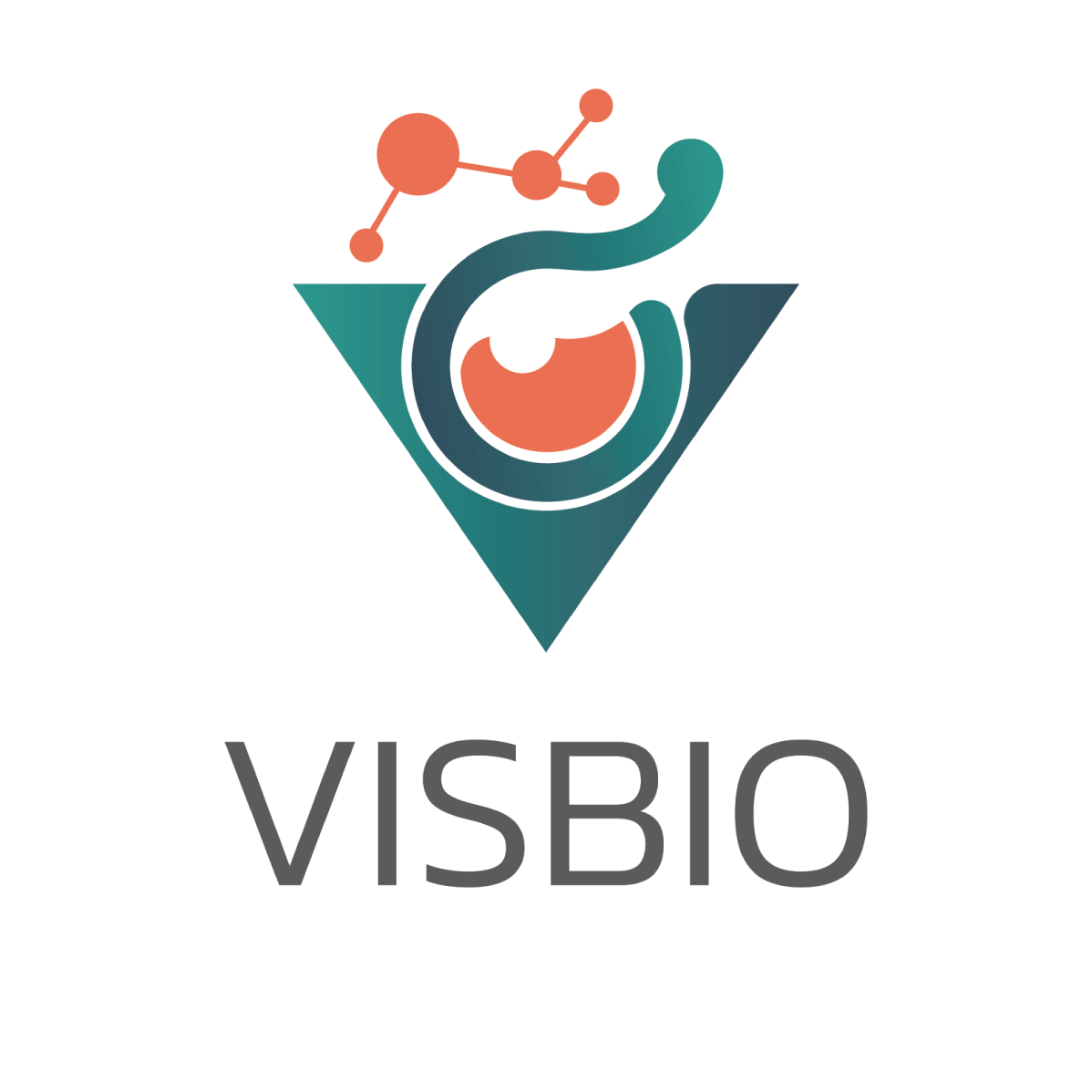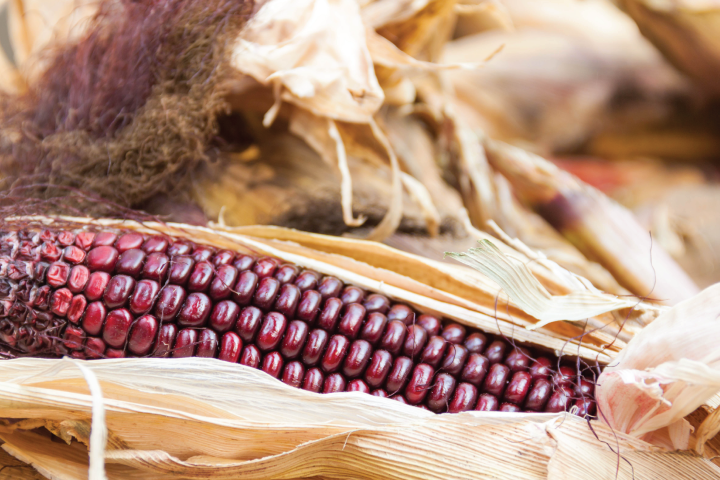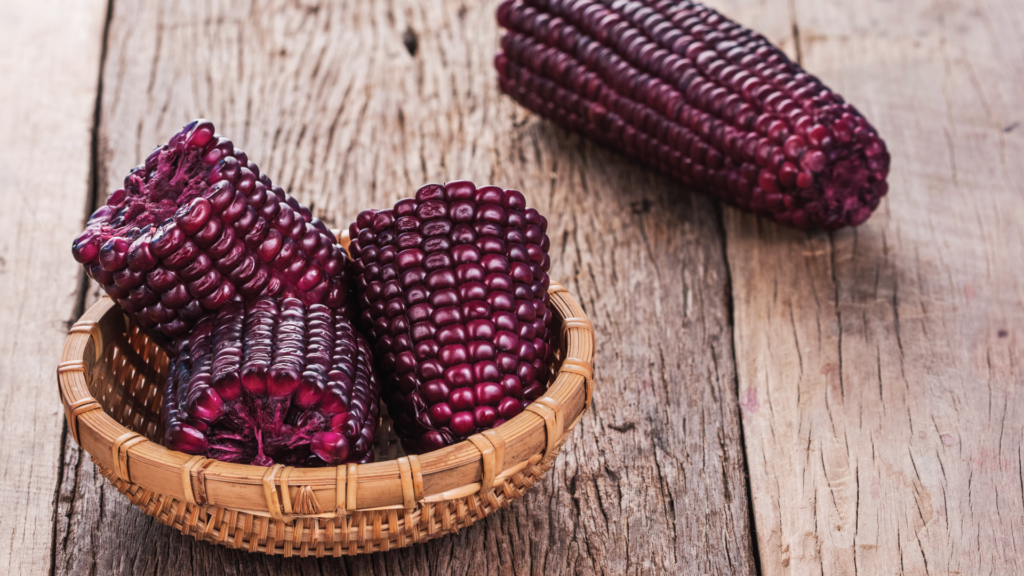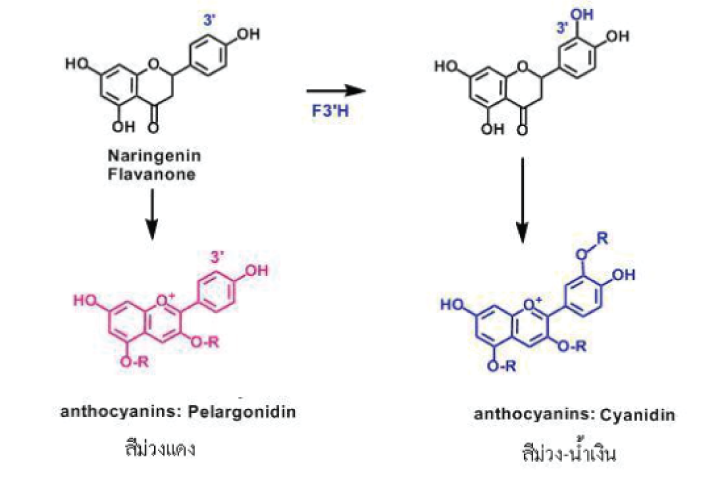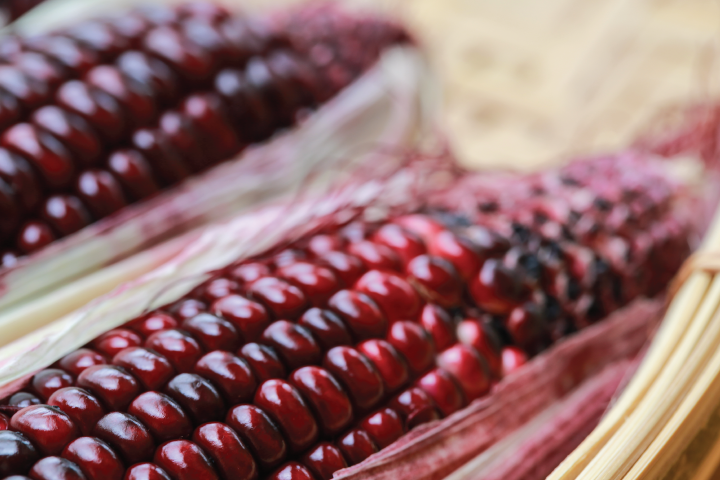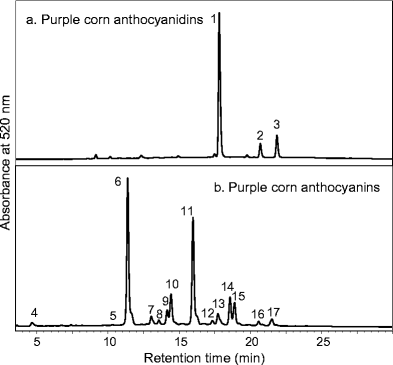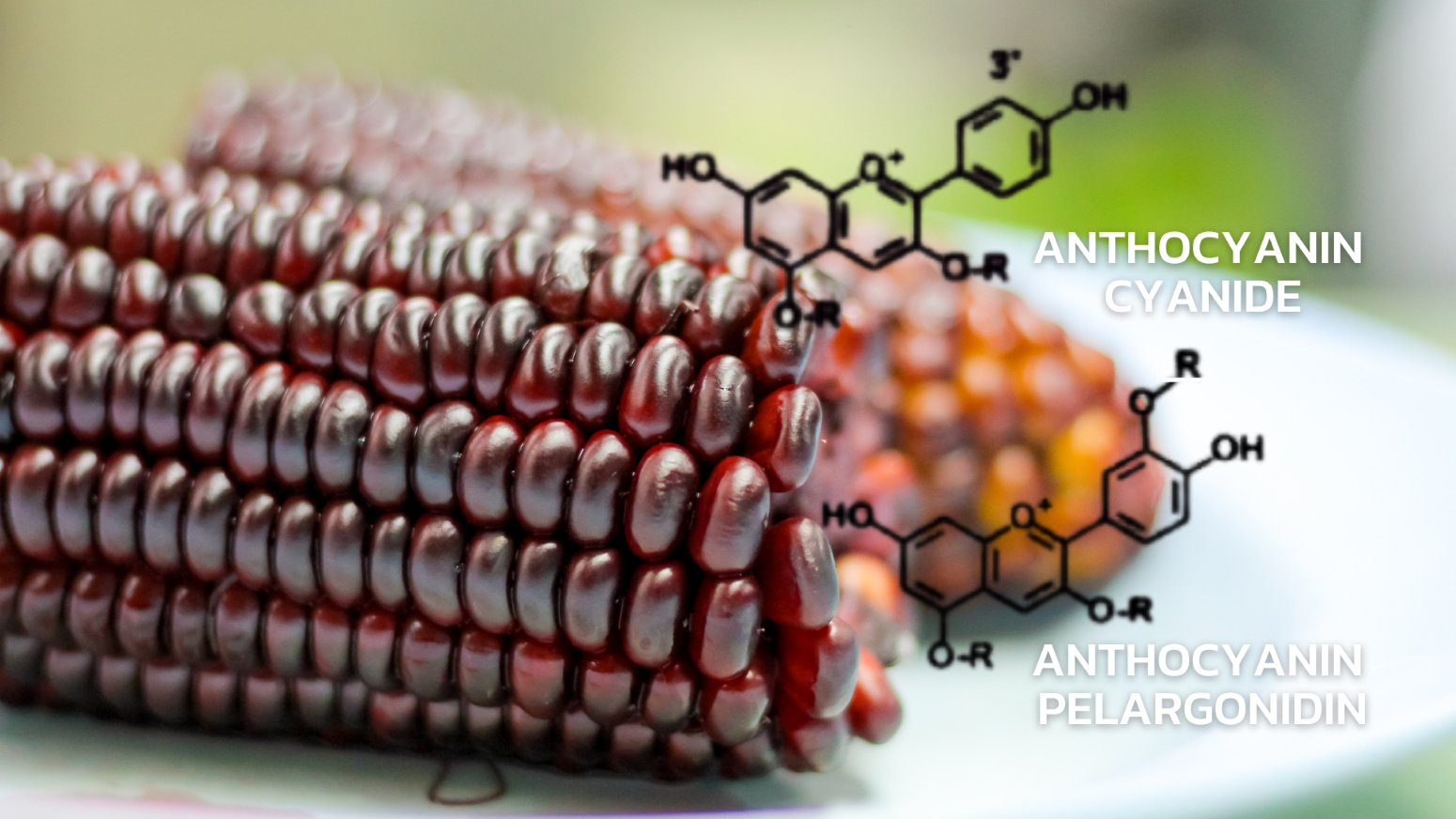
Service Information for Anthocyanin Quantitative Testing Using HPLC
VISBIO provides services for the examination and analysis of biomarker quantities, specifically the compound anthocyanin, using the High-Performance Liquid Chromatography (HPLC) technique.
At VISBIO, we offer testing and analysis of the biomarker component known as anthocyanin in various health and beauty industry products. Anthocyanin is a crucial substance found in purple corn, categorized as a flavonoid compound and recognized as an antioxidant. It is a significant source of anthocyanidin compounds that help reduce the risk of cancer, boost immune system function, combat infections, aid in wound healing, enhance red blood cell production, and mitigate cellular damage. These attributes make it ideal for further development in health and beauty industry products.
Consequently, the analysis and differentiation of anthocyanin types and quality control in purple corn hold paramount importance. The High-Performance Liquid Chromatography (HPLC) technique is widely utilized for such analyses due to its effectiveness and prevalence.
Benefits and Nutritional Value of Purple Corn
Puirple corn helps reduce the risk of heart disease and cancer. Boiled sweet corn can release important antioxidants called ferulic acid, which enhances the body’s immune system. Furthermore, ferulic acid is known for its anti-aging properties, protecting against cancer, heart disease, colds, and the impact of ultraviolet radiation, aiding in preventing skin cancer from sun exposure.
Purple corn is a type of starchy food with high nutritional value, consisting of essential nutrients such as:
- Carbohydrates: Mature purple corn kernels contain about 72% carbohydrates, making it a highenergy starchy food. It provides 4 calories (about 1 minutes of running) per gram.
- Fats: Mature purple corn kernels contain around 4% fat, which can be extracted to make corn oil. Corn oil has unsaturated fats, especially linoleic acid (up to 40%) and oleic acid (37%).
- Protein: Purple corn contains about 4% protein. While the protein in corn is less beneficial due to its deficiency in essential amino acids like lysine and tryptophan, consumers can complement their diet with other dry legumes to improve the nutritional value.
- Vitamins: Purple corn contains vitamins B1 and B2 in quantities of 0.08-0.18 milligrams per 100 grams (about 3.53 oz). It has low amounts of niacin (1.1-1.5 milligrams). Pellagra, a disease caused by niacin deficiency, can occur in populations heavily dependent on corn as a staple food. Vitamin E is found mainly in yellow corn.
- Minerals: Purple corn contains important minerals for growth and development, including calcium and iron, but in relatively small amounts.
- Dietary Fiber: Although present in small amounts, dietary fiber in purple corn aids in digestion and bowel movement.
Extraction of Anthocyanin from Purple Corn
Consumers are placing a higher importance on their health nowadays, turning towards consuming nutritious foods. Purple corn has gained significance among consumers due to its nutritional content, especially anthocyanins. Anthocyanins are known for their antioxidant properties and higher starch content compared to yellow and white corn kernels. Additionally, purple corn contains higher levels of amino acids and minerals than yellow corn. Purple corn is therefore considered an important source of antioxidants and other beneficial compounds.
Purple corn not only offers important antioxidants but also presents an attractive purple color, distinct taste, and potential for nutraceutical foods. Anthocyanins are water-soluble phenolic compounds that are easily degraded by heat, oxygen, and light. Even in the corn silk (Zea mays hair), which is a byproduct of corn consumption, there are small thread-like structures.
Corn silk, left behind after consuming corn, contains flavonoids, notably Maycin, which has been found to inhibit cancer cell growth. Additionally, the sugary threads of corn silk can be boiled to make a soothing drink to alleviate discomfort related to urinary issues, such as infections, inflammation, and kidney stones. This has been linked to blood pressure reduction. Research has shown that extracts from corn silk have the potential to inhibit the growth of certain bacteria, such as S. marcescens, S.typhimurium, S. aureus, E. coli, B. cereus, P. vulgaris, P. aeruginosa, and A. hydrophila, through agar well diffusion and broth dilution methods.
(Raenu Yucharoen1 and Pawalee Srisuksomwong2 “Development of Cosmetic Product from Corn Silk Extracts” 1Division of Biology and Biotechnology, Faculty of Science and Technology, Nakhon Sawan Rajabhat University,)
Corn Extracts for Health and Beauty Industry
Thailand is an agricultural country that exports a significant number of agricultural products. Apart from rice, which is a major export, there are other economically important crops such as corn, sugarcane, and cassava that are grown in various regions across the country. After harvesting these crops, they are processed in factories to produce food and raw materials for various industries. The remaining agricultural materials are utilized for other purposes. For corn, farmers typically collect the husks, leaves, and parts of the plant that are not used. Some parts are plowed back into the soil as organic fertilizer, used as biofuel for electricity generation, or as animal feed.
Extracts derived from purple corn can be utilized in various ways. For example, natural red colorant can be extracted from the husks of purple corn. This extract contains anthocyanins, which have antioxidant properties. It is suitable for use as a food coloring agent and can be incorporated into various products such as fruit juices, diverse beverages, bakery goods, and jellies. This colorant can also be encapsulated and consumed as a dietary supplement. Moreover, all parts of purple corn, including the cob and silk, can be developed into products that focus on enhancing various properties for skincare. These products can aid in inhibiting free radicals, delaying cell aging, and providing a range of skincare benefits.
The cosmetics market in the country sees imports worth billions of baht and continues to show a rising trend. Therefore, promoting the production of natural cosmetics using local resources is crucial to maximize benefits and replace foreign imports. However, the majority of locally produced cosmetics do not meet standardized requirements. To address this, there should be efforts to raise standards, provide knowledge to local cosmetics producers, and encourage the use of natural extracts from local resources. This would ensure sustainable benefits, environmental friendliness, and safety for consumers, which are significant concerns given the potential side effects of non-standardized cosmetics. Thus, the utilization of natural extracts from corn presents an interesting opportunity, as it allows the conversion of agricultural byproducts into high-value products that can benefit various sectors.
Example of Reporting Results from Anthocyanin Analysis Using HPLC Technique
From the chromatogram, the chromatogram of Anthocyanin is shown. The area under the graph was calculated to determine the quantity of Anthocyanin, compared with the standard substance.
Literature:
- Rattana Muangrat*, Kronwika Sakulkaipeera, Tanyarat Burakhum and Leelawade Chomnan “Factors Affecting Extraction of from Purple Corn Anthocyanins” Department of Food Engineering, Faculty of Agro-Industry, Chiang Mai University. Raenu Yucharoen1 and Pawalee Srisuksomwong2 “Development of Cosmetic Product from Corn Silk Extracts” 1Division of Biology and Biotechnology, Faculty of Science and Technology, Nakhon Sawan Rajabhat University
- Fei Lao and M. Monica Giusti, Quantification of Purple Corn (Zea mays L.) Anthocyanins Using Spectrophotometric and HPLC Approaches: Method Comparison and Correlation, May 2016Food Analytical Methods 9(5)
- ดร.อุดมลักษณ์ สุขอัตตะ. “จากซังข้าวโพดสีม่วง สู่ผลิตภัณฑ์บำรุงผิว” นิทรรศการงานวันเกษตรแฟร์ ประจำปี 2561“เทคโนโลยีก้าวไกล พัฒนาเศรษฐกิจไทยไป 4.0” ฝ่ายเทคโนโลยีชีวมวลและพลังงานชีวภาพ สถาบันค้นคว้าและพัฒนาผลิตผลทางการเกษตรและอุตสาหกรรมเกษตร มหาวิทยาลัยเกษตรศาสตร์
- “ข้าวโพดหวาน และการปลูกข้าวโพดหวาน” https://www.surinseed.com/article/26/ข้าวโพดหวาน-และการปลูกข้าวโพดหวาน
- “ข้าวโพด” บรรหาร และกองบรรณาธิการ, 2554 http://otop.dss.go.th/index.php/en/knowledge/informationrepack/319-corn?showall=&start=4
- กรมส่งเสริมการเกษตร. (2551). คู่มือนักวิชาการส่งเสริมการเกษตร. ข้าวโพด ISBN 978-974-9562-61-1 กรมส่งเสริมการเกษตร สำนักส่งเสริมและจัดการสินค้าเกษตร
